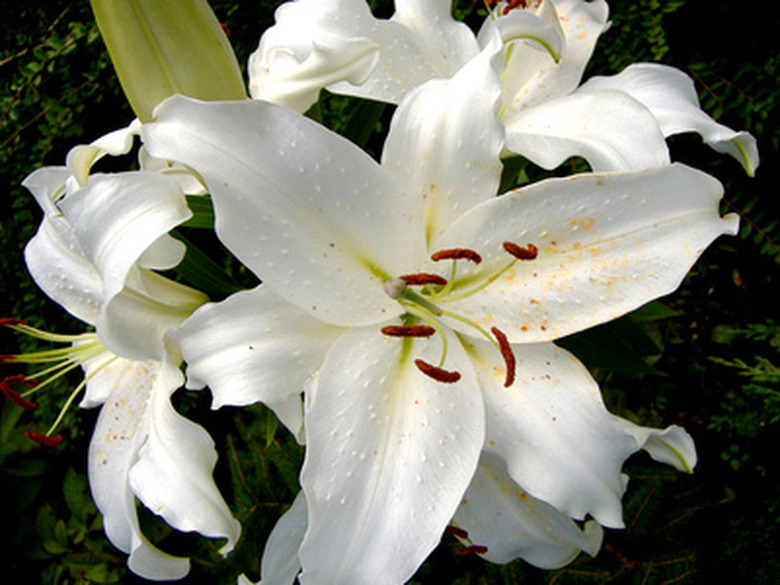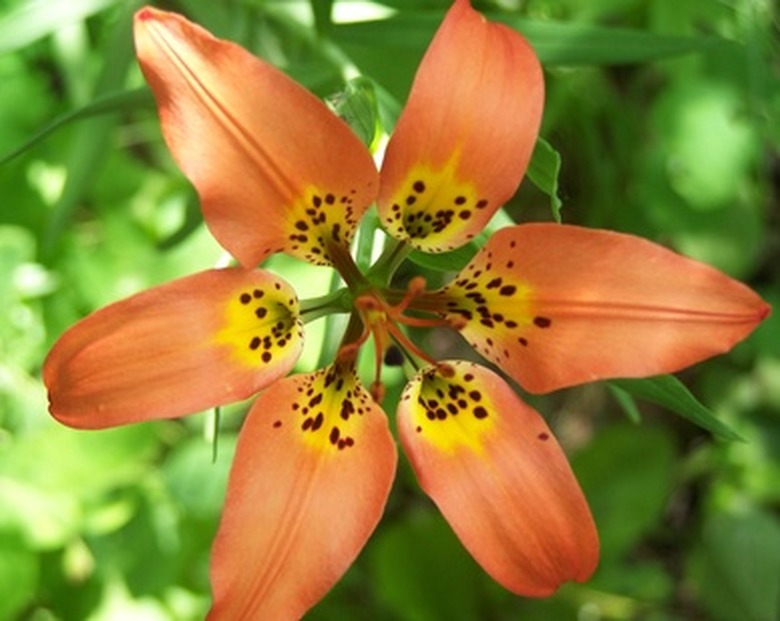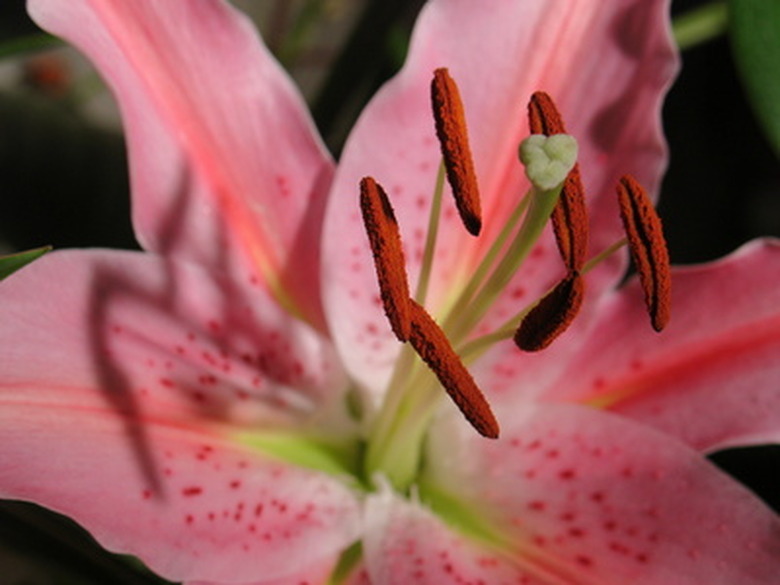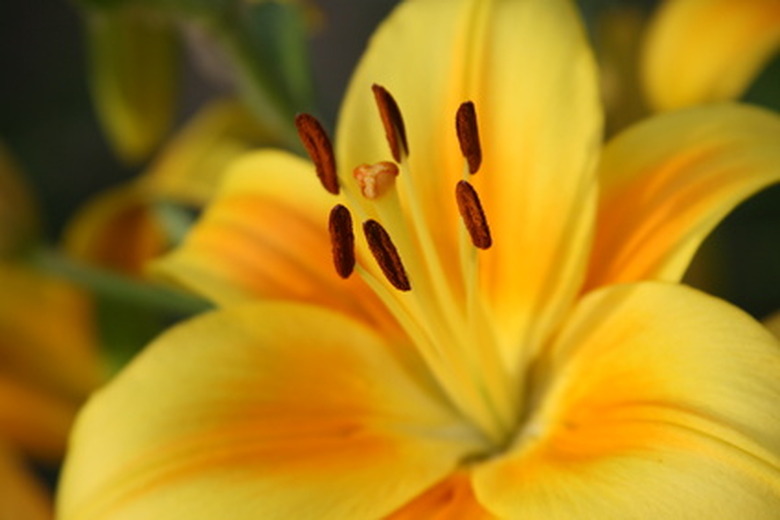Parts Of A Lily Flower
True lilies, those plants grouped taxonomically into the family Liliaceae and genus Lilium, share common traits in the structure of their flowers. While lily plants grow from either bulbs, their leaves also share a common characteristic of being parallel-veined and arranged in whorls or spirals on the stems. There are around 100 different species of Lilium in the world, all native to the Northern Hemisphere.
Corolla
When the lily flower bud first opens, there are two different ranks of structures, each comprised of three sections. The outer-most group of three is known as sepals, while the inner group of three is known as petals. Since lily sepals and petals look and function the same to create the flower, they are known as tepals. Thus, six tepals comprise the corolla of the lily flower.
- True lilies, those plants grouped taxonomically into the family Liliaceae and genus Lilium, share common traits in the structure of their flowers.
- While lily plants grow from either bulbs, their leaves also share a common characteristic of being parallel-veined and arranged in whorls or spirals on the stems.
Pistil
In the center of the lily flower is the female floral part known as the pistil. It is an elongated tube with a swollen base where the ovules are housed in the ovary. The long tube of the pistil is known as the style, while the very tip of the pistil, which is sticky, is known as the stigma. The sticky tip of the stigma catches pollen grains that later cause the ovules in the pistil to become fertilized and develop into seeds. Most often the stigma tip is three-lobed.
Stamens
Six male-gendered stamens encircle the lily flower's pistil. Each stamen has a long, thread-like stem called a filament that is topped by an anther. The anther is usually a long cylinder that splits open to shed pollen. The anthers may be colored orange, gold, or rusty brown and ornamentally contrast the color of the flower's tepals.
- In the center of the lily flower is the female floral part known as the pistil.
- Six male-gendered stamens encircle the lily flower's pistil.
Parts Of A Lily Flower
Flowers are more than just a pretty and colorful addition to your garden. Look at the bottom of a whole lily plant. The leaves make food for the plant, which is then stored in the bulb. The sepals are what initially encase the immature flower bud and protect it. There are usually several stamens around the inside of the lily. The anther is the rounded section at the top of each filament. Find the female parts of the flower. The pistil is the large center part of the flower. It is sticky so that it can catch pollen. Using a knife, slice the ovary in half so you can see a cross section. It contains the unfertilized eggs as well as seeds.
- Flowers are more than just a pretty and colorful addition to your garden.
- The sepals are what initially encase the immature flower bud and protect it.
References
- "A-Z Encyclopedia of Garden Plants"; Christopher Brickell and H. Marc Cathey, eds.; 2004
- Backyard Nature Website: Lily Flowers
- The Anatomy of a Lily
- Flower Dissection



